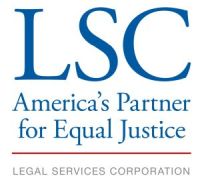Filter your results
Results 1 - 10 of 26. To narrow results enter search keywords or select filters.
Below are modules (guided informational programs) related to legal issues surrounding caregiving and caregivers in Idaho in English and Spanish.
https://www.idaholegalaid.org/files/html/caregiver-training-module-legal-considerations
Template for a request for a copy of notices of default and sale pursuant to Idaho Code § 45-1511.
Use this template for standard Notary Language.
Tenants can mail this form to any person who has sent you a notice about foreclosure. This might be an attorney, a bank, or a new owner of the property.
Using the “produce the note” strategy is something all homeowners facing foreclosure can do. If you believe you’ve been treated unfairly, fight back. We have created templates for a legal request, a letter to your lender and a motion to compel to help you through the process. Read the step by step “how to” under the videos.
On May 20, 2009, the President signed into a law a bill containing provisions protecting tenants living in foreclosed buildings. (The Protecting Tenants at Foreclosure Act is Title VII of Public Law 111-22).
These provisions immediately went into effect and are "self-executing", so no federal agency (such as HUD) is responsible for making them work. It is up to advocates to make sure that tenants, landlords, public housing authorities, courts, the legal community, and others involved in the foreclosure process are aware of these new rights for tenants.
Once a creditor sues and obtains a judgment (court order) against a debtor they must follow a legal process to obtain payment. The creditor collects on a judgment through a "Writ of Execution" which directs a sheriff to seize the debtor's money, property, or real estate to pay the debt (in limited situations, money or property may be taken before a court enters a judgment). A creditor must collect on the debt within five years after a court issues a judgment, although a creditor can renew a judgment for additional five year periods.
Un acreedor puede requerirle a un empleador a desviar parte del sueldo de un empleado para pagar un fallo/ sentencia. El acreedor está limitado a tomar el sueldo de un deudor que: a) exceda treinta (30) veces el sueldo mínimo federal ($7.25 por hora vigente 24 de julio 2009), o b) es 25% del ingreso disponible. Cualquier exención cual permite al deudor mantener más de su sueldo aplica. Ingreso disponible es el pago neto del deudor después de las deducciones requeridas por ley, tal como impuestos, cuales son rebajados...
What is a garnishment? A garnishment is basically a legal collections tool where a creditor obtains a court order compelling an employer to withhold a portion of an employee’s wages. The amount that can be withheld is capped at 25%, however, the percentage may vary depending on the state issuing the garnishment and the type of debt. The cap applies to all creditors, meaning 25% is the most that can be withheld at any one time. Garnishments, however, are not limited to wages and can involve one time garnishment of bank accounts or personal property.
Pagination
Close
Filter your results
Type
Topics
Tags
Our Partners
LSC's support for this website is limited to those activities that are consistent with LSC restrictions.

